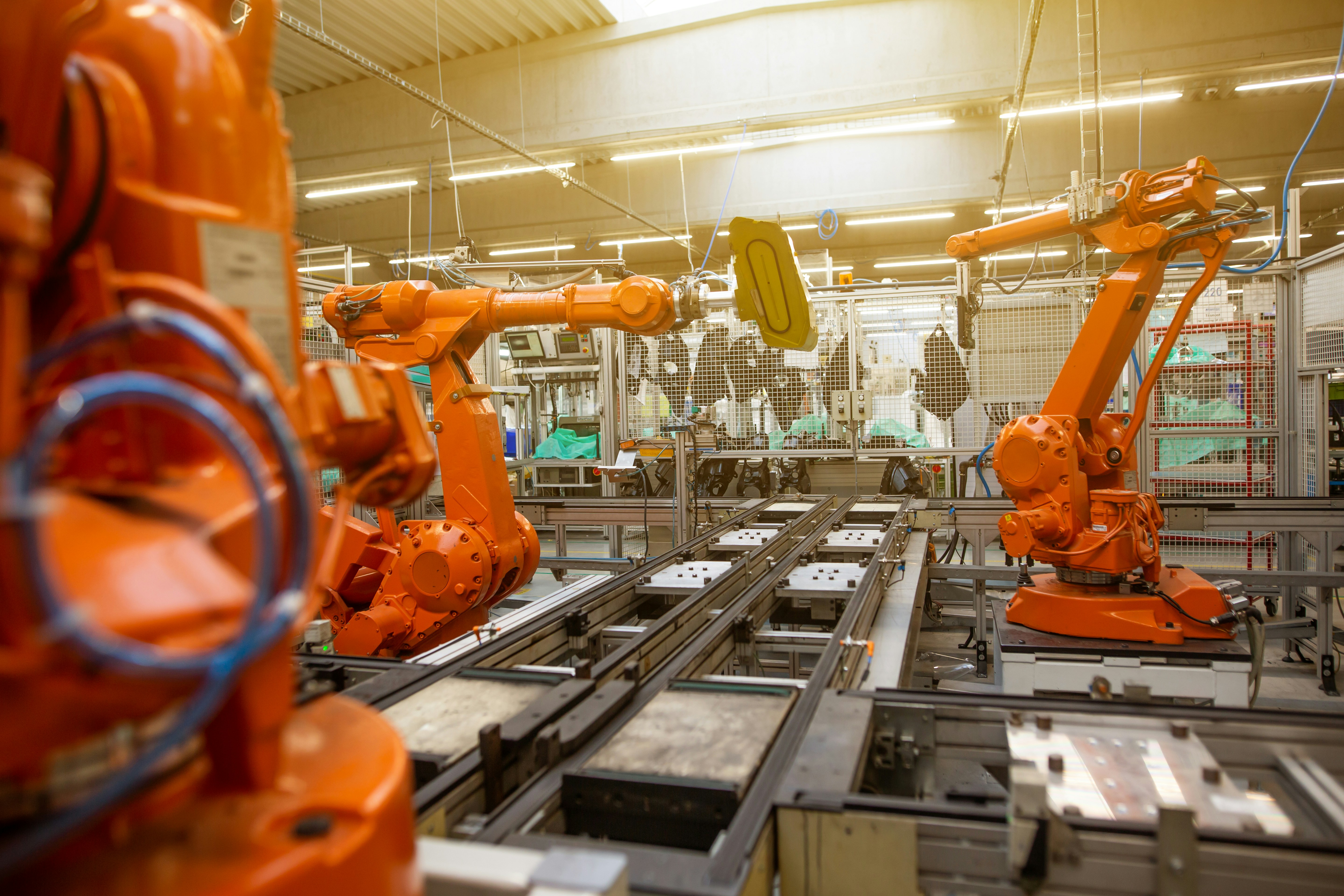
Return-to-Work Pathways: Relaunch Your Robotics Career with Returnships, Flexible & Hybrid Roles
Returning to work after a career break can feel like stepping onto a moving conveyor belt—especially in a hands-on, fast-paced field like robotics. Whether you paused for parenting, caring responsibilities or another life chapter, the UK’s robotics sector now offers a wealth of return-to-work pathways. From structured returnships to flexible and hybrid roles, these programmes value your transferable skills and lived experience, pairing you with mentorship, targeted upskilling and supportive networks so you can confidently relaunch your robotics career.
In this guide, you’ll learn how to:
Grasp the current demand for robotics talent in the UK
Translate your organisation, communication and problem-solving skills into robotics contexts
Overcome common re-entry challenges with practical solutions
Refresh your technical knowledge through targeted learning
Access returnship and re-entry programmes tailored to robotics
Find roles that fit around family commitments—whether flexible, hybrid or full-time
Balance your career relaunch with caring responsibilities
Master applications, interviews and networking specific to robotics
Draw inspiration from real returner success stories
Get answers to common questions in our FAQ section
Whether you aim to return as a robotics engineer, controls specialist, automation integrator or research scientist, this article maps out the steps and resources you need to reignite your robotics career.
1. The UK Robotics Landscape: Why Now Is the Time to Return
1.1 Booming Market Growth
Robotics underpins sectors from manufacturing and logistics to healthcare and agriculture. UK investment—through Innovate UK’s Robotics and AI hubs, the Made Smarter initiative and industry-university partnerships—is driving rapid adoption of collaborative robots, autonomous vehicles and AI-powered automation.
1.2 Persistent Skills Shortages
Surveys report that over 60% of UK companies struggle to recruit professionals skilled in robot programming, controls, machine vision and systems integration. Employers increasingly value returners who bring resilience, project management and cross-disciplinary communication skills honed during career breaks.
1.3 Flexible & Hybrid Working Adoption
While hands-on lab or factory work remains essential, many robotics roles—particularly in simulation, algorithm development and remote monitoring—can be done flexibly or remotely. Over 70% of robotics firms now offer hybrid models, with part-time contracts and compressed-week options opening multiple pathways back.
2. Why Parents and Carers Excel in Robotics Roles
Advanced Organisational SkillsManaging family routines—school runs, medical appointments, household logistics—sharpens your ability to coordinate multi-stage integration projects, schedule testing cycles and manage complex changeovers.
Strong Communication & CollaborationCaring roles cultivate empathy and active listening—crucial when gathering requirements from operations teams, explaining automation solutions to non-technical stakeholders and documenting processes clearly.
Adaptability & ResilienceNavigating unexpected home challenges builds creative problem-solving and resilience—key attributes when debugging robots on the shop floor, refining vision systems or pivoting integration plans in response to new data.
Fresh Perspectives on Safety and UsabilityYour diverse experiences can inform more intuitive human-robot interactions, inclusive safety protocols and user-centric end-effector designs.
3. Overcoming Re-Entry Challenges: Obstacles and Solutions
Skills Becoming OutdatedSolution: Enrol in modular courses on ROS (Robot Operating System), PLC programming, vision libraries (OpenCV) and modern control algorithms to rebuild confidence.
Confidence GapsSolution: Join mentor schemes and returner communities—such as Women in Robotics UK or the Robotics Returners Network—to reconnect with peers and celebrate small wins.
CVs Emphasising Past RolesSolution: Adopt a skills-based CV format, highlighting recent mini-projects, volunteer integration work or simulation tasks you’ve completed during your break.
Eroded Professional NetworkSolution: Rebuild connections via virtual meetups (e.g., UK Robotics Meetup), LinkedIn groups and alumni associations by reaching out to two or three contacts each week.
4. Refreshing Your Robotics Skillset After a Break
4.1 Core Technical Competencies
Reacquaint yourself with:
Robot Programming: Python/C++ with ROS, ABB Rapid, FANUC Karel
Control Systems: PID tuning, real-time control, simulation in Gazebo or Webots
Machine Vision: OpenCV, TensorFlow/Keras for object detection, 3D vision libraries
Embedded Systems & Electronics: microcontrollers (Arduino, Raspberry Pi), CAN bus, sensor integration
Systems Integration: PLCs (Siemens, Allen-Bradley), SCADA basics, OPC UA
Safety Standards: ISO 10218, ISO/TS 15066 for collaborative robots
4.2 Online Courses & Certifications
Coursera – Modern Robotics Specialisation (Northwestern University)
edX – Control of Mobile Robots (Georgia Tech)
Udemy – ROS for Beginners in 5 Days
PLC Academy – Siemens PLC Foundation Courses
4.3 Workshops & Virtual Labs
ROS Development Studio – cloud-based ROS tutorials and labs
MathWorks Webinars – MATLAB/Simulink for robotics and controls
Robot Operating System e-vents – livestream hackathons and coding sessions
4.4 Hands-On Projects & Portfolio
Host a GitHub repo featuring mini-projects: ROS navigation stack demos, pick-and-place simulations or simple vision-based sorting.
Volunteer for a local makerspace or community robotics club to gain fresh hands-on experience.
Document your journey via a blog or short videos, showing both technical depth and communication clarity.
4.5 Micro-Learning & Podcasts
Podcasts: The Robot Report Podcast; Robots in Depth
Blogs & Newsletters: IEEE Spectrum Robotics; The Servo Magazine
Apps: SoloLearn for C++/Python practice; MATLAB mobile app for quick exercises
5. Returnship & Re-Entry Programmes in Robotics
5.1 What Are Robotics Returnships?
Returnships are paid, cohort-based programmes combining mentorship, technical refreshers and hands-on integration projects to help you transition back into long-term robotics roles.
5.2 Notable UK & Global Programmes
ABB Robotics Returners – 12-week placements in robotic cell integration and simulation.
Siemens Mechatronic Systems Exchange Programme – rotations on PLC-driven assembly lines.
Boston Dynamics ReEntry – cohort-based training on mobile robotics and perception systems.
Honda Robotics Fellowship – flexible placements in humanoid and assistive robotics labs.
5.3 Application Tips
Signal Your Intent: Update your LinkedIn headline to “Open to Robotics Returnships.”
Tailor Your Narrative: Highlight any ROS demos, volunteer integration tasks or simulation work.
Leverage Referrals: Connect with alumni for advice, introductions and potential referrals.
6. Finding Flexible, Hybrid & Full-Time Robotics Roles
6.1 Types of Flexible Arrangements
Flexible Hours: Core collaboration windows with freedom to run simulations or write code asynchronously.
Hybrid Models: On-site lab or factory work combined with remote algorithm development or documentation.
Compressed Weeks: Longer days over fewer days, enabling a four-day week.
Job Shares & Part-Time: Splitting integration or algorithm development responsibilities between two professionals.
6.2 Negotiating Your Preferred Setup
Be Transparent: Clearly communicate your essential care windows (e.g., school runs) in early discussions.
Reference Your Rights: Under the UK’s Flexible Working Regulations, employees with 26 weeks’ service can request changes to their working pattern.
Propose a Pilot: Suggest a six-week trial to demonstrate productivity under your preferred model.
6.3 Leveraging roboticsjobs.co.uk
Use filters for Flexible Hours, Hybrid Working and Return-to-Work listings.
Look for our Returner-Friendly badge on employer profiles.
Subscribe to custom alerts for new roles matching your criteria.
👉 Browse flexible & hybrid robotics roles »
7. Balancing Your Robotics Comeback with Caring Responsibilities
7.1 Time-Blocking Techniques
Employ Pomodoro or time-boxing for focused simulation runs, code reviews or hardware testing.
Reserve family commitments in a shared calendar to protect essential work sessions.
7.2 Building Childcare & Support Networks
Explore local childcare co-ops, after-school clubs and holiday care schemes.
Join parent-carer forums for resource sharing, peer advice and emotional support.
7.3 Prioritising Wellbeing
Schedule short breaks and light exercise—mindfulness apps like Headspace can help reset your focus.
Define clear boundaries between work and home to prevent burnout.
8. Mastering Applications, Interviews & Networking
8.1 Crafting a Targeted CV
Start with a Skills Summary highlighting ROS, controls, vision libraries and recent upskilling achievements.
Include a concise Career Break note, emphasising any refresher courses, volunteer work or simulation projects.
8.2 Interview Preparation
Technical Assessments: Be ready to discuss end-to-end integration on a simulated cell, control-loop tuning or vision-based object tracking.
System Design: Architect a pick-and-place solution, an automated inspection cell or an autonomous mobile robot workflow.
Behavioural Questions: Use the STAR method to illustrate cross-team collaboration, resilience under hardware setbacks and stakeholder communication.
8.3 Networking & Personal Branding
Aim to connect with 2–3 new contacts weekly: integration leads, controls engineers and returner alumni.
Share LinkedIn updates on mini-project demos, lessons learned from labs or algorithm challenges.
Attend both in-person events (e.g., UK Robotics Week) and virtual conferences (e.g., ROSCon) to stay visible.
9. Success Stories: Robotics Returners Who’ve Thrived
Emma, Automation Engineer & Mum of TwoAfter a four-year break, Emma completed an online ROS specialisation, contributed to a community ROS package, and joined a 12-week ABB returnship. She now works hybrid, integrating collaborative robots on automotive lines.
Mark, Controls Specialist & CarerMark took two years out to care for his partner. He refreshed his PLC and Python skills through evening workshops, volunteered at a local makerspace to build an AMR prototype, and now works flex-time for a logistics automation start-up, splitting his week between home and their lab.
Conclusion: Your Robotics Comeback Starts Today
Your career break has endowed you with resilience, organisation and empathy—qualities the UK’s robotics sector urgently needs. By strategically upskilling, exploring return-to-work pathways and negotiating the flexible, hybrid or full-time arrangement that fits your life, you can relaunch your robotics career on your own terms.
Next Steps:
Create a free profile at roboticsjobs.co.uk.
Set up tailored alerts for returner-friendly, flexible and hybrid robotics roles.
Join our upcoming “Return-to-Work in Robotics” webinar to learn directly from employers and successful returners.
Your next chapter in robotics awaits—welcome back!
FAQ
1. What is a robotics returnship?A robotics returnship is a paid, structured re-entry programme combining mentorship, technical refreshers and hands-on integration projects to help you transition from a career break back into robotics roles.
2. Can I request flexible or hybrid working in robotics?Yes. Under the UK’s Flexible Working Regulations, employees with 26 weeks’ service can request changes to their working pattern. Clearly outline your care commitments and propose a trial period to demonstrate productivity.
3. How do I explain my career break on my CV?Include a brief “Career Break” section stating the reason (e.g., childcare, caregiving) and focus on refresher courses, volunteer work or simulation projects you completed during that time.
4. Are part-time robotics roles available?While full-time roles remain common, many organisations now offer job shares, project-based contracts and compressed-week models. Use dedicated filters and discuss part-time options with hiring managers.
5. Which robotics skills should I prioritise first after a break?Begin with ROS basics, control-loop tuning and simple vision tasks (OpenCV), then expand into ROS navigation, PLC integration or advanced machine-vision pipelines.
6. How can I rebuild my professional network in robotics?Attend events (UK Robotics Week, ROSCon), join LinkedIn and Slack robotics communities, and engage with returner-focused groups like the Robotics Returners Network.


